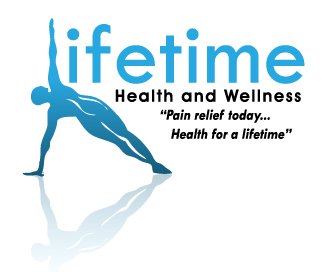Chiropractic
Chiropractor in South Elgin explains knee exercises for beginners.
Here is a simple exercise that you can do at home with no equipment.
It works the biceps femoris, semimembranosus, semitendinosus muscles.
The purpose of this exercise is to increase knee strength and muscular endurance.
By doing this exercise you can have the benefits of improved stability, functional strength and injury prevention.

Begin lying on floor facing up.
Bend knees so feet are firmly on floor.
Extend arms upward toward ceiling.
Activate core muscles.
Lift hips off floor to attain a bridge position with knees, hips and shoulders in alignment.
Slowly return to start position.
Repeat for prescribed repetitions and sets.
Initially, you may develop some cramping in the back of your thigh. A simple hamstring stretch before and after may prevent this from occurring.
Slowly return to start position.
Repeat for prescribed repetitions and sets.
© 2005-2010 WebExercises, Inc., Patent Pending, All Rights Reserved.
Migraines –NOT A Typical Headache
Although they often resemble other types of headaches, migraines exist in a class of their own. The World Health Organization ranks migraine headaches at 19 on its list of health conditions causing disability.1 Anyone experiencing migraines on a regular basis would confirm how disabling these headaches are.2 Most often, the typical migraine sufferer finds a dark, quiet room and rests there until the pain subsides. What Is a Migraine, and What Causes It? Migraines differ from other head-aches because they occur in phases. And the painful phase of the migraine is almost always associated with other bodily symptoms. The specific causes of migraines remain elusive. It’s believed vascular changes in the brain are responsible for the pain. Researchers have noted that certain people experience blood vessel contractions and dilations in the brain just prior to a migraine occurring.Because these contractions and dilations can be influenced by neuro-logical or hormonal factors, experts are investigating these areas for potential solutions to migraines.
Common triggers for migraine headaches include:
Stress
Lack of sleep
Changes in weather
Environmental chemicals
Liver problems
Rapid change in hormone levels
Dental pain
Certain foods (cured meats, redwine, onion, eggs, nuts and cheese)
Medical conditions (depression, severe hypertension) Medications
The Phases of a Migraine
There are four phases involved with migraines:
prodrome,
aura,
headache,
and postdrome And Aura.2
Although not all migraines involve all four phases, most patients experience a combination of these symptoms. Most migraines are preceded by a specific phase called the prodrome, and it may occur hours or days before the actual headache. During this phase, sufferers may experience depression, food cravings, neck stiffness, nausea, hyperactivity or fatigue.The next of the four phases is the aura. This is a collection of neurologi-cal symptoms that usually involve a person’s visual experience (e.g. flashingor wavy lights). Other symptoms of an aura may include things like strange smells, tingling sensations and cogni-tive difficulties. According to one medical expert, only about 20% of patients with migraines experience an aura, and it’s likely to occur shortly before the onset of the headache.3
The prodromal and the aura phases warn a person that a migraine is on the way. By taking action during these earlier phases, a migraine sufferer may be able to avoid the more painful stages of this type of headache.
Headache
The main characteristics of the headache phase are… Moderate to intense pain with a pulsating quality that lasts 4 to 72 hours. It may be aggravated by bright light or loud noise. Nausea and vomiting Depression and severe anxiety Hot flashes and chills Dizziness Confusion Dehydration or fluid retention
Post drome At this phase the pain has subsided. But most sufferers will tell you the migraine episode is definitely not over. The postdrome phase may take hours or days to complete. During this time, a migraine sufferer may experience…
Low mood, especially depression
Feelings of euphoria and well being
Fatigue
Poor concentration and comprehension
How Do You Treat a Migraine?
For most people who experience recurring migraines, the best option is to find a dark, quiet place, and focus on relaxing. Migraines respond well to peace and quiet. For those who can’t endure the painful stages of a migraine, they may require migraine specific medications such as NSAIDs, Triptans or Ergot. Many studies show chiropractic as a very effective tool used to treat migraine headaches.4-5 Sometimes chiropractic treatments result in instant and significant relief, but most cases require ongoing care to manage painful episodes
References and Sources: 1.International Headache Society-http://ihs-classification.org/en/02_klassifikation/02_teil1/01.00.00_migraine.html2.Edmeads J, Findlay H, Tugwell P,Pryse-Phillips W, Nelson RF & Murray TJ. Impact of migraine and tension-type headache on life-style, consulting behaviour, and medication use: a Canadian population survey. Can J Neurol Sci. 1993; 20(2): 131-137.3. Bronfort G, Assendelft WJ, Evans R, Haas M & Bouter L. Efficacy of spinal manipulation for chronic headache: a systematic review. J Manipulative Physiol Ther. 2001; 24(7): 457-466.4. Tuchin PJ, Pollard H, Bonello R. A randomized controlled trial of chiropractic spinal manipulative therapy for migraine. J Manipula-tive Physiol Ther 2000;23(2):91-95.5. Tuchin PJ. A case of chronic migraine remission after chiropractic care. J Chiropractic Medicine. 2008; 7(2): 66-70
- « Previous Page
- 1
- …
- 5
- 6
- 7

